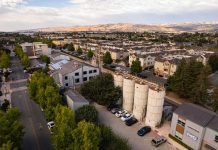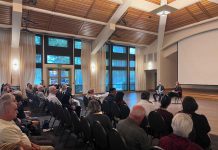I have not written a column in a long time. Rather, I have spent months trying to understand what is happening with water in California. There are some who have made this a career, so I will not claim their level of specific expertise. Rather, I hope that you will follow along while I try to provide some perspective on the California Water problems as I see them.
I don’t think that the public is well served by most media coverage, dictated mostly by events. We are undeniably in a year of extreme water shortage, especially in Southern California, where the wettest year on record has been followed by the driest year on record and that has the potential for catastrophic consequences.
Events get covered, but do not elicit the questions that they should raise. Many media are losing their expertise on water politics. The San Francisco Chronicle and the Sacrament Bee have both lost their most knowledgeable reporters within the last month. We are left with event coverage by reporters who do not push for getting the right answers or connecting water with other things that are making news.
The best example of non-coverage was the latest population projections released by the California Department of Finance. It estimated that California will have an additional 25 million people by 2050. Unlike petroleum, there are no alternatives to water. In fact, there is no such thing as additional water. We have what we have. Where will we get the water to serve the needs of an additional 25 million people; to raise the food that they will require; to operate the industries that provide their employment?
There are no simple answers to these questions. Add the fact that global warming is changing precipitation patterns in ways that we do not yet fully understand and you quickly come to the conclusion that business-as-usual thinking will not deliver the answers that we need.
State Senator Joe Simitian, chair of the Environmental Quality Committee, has introduced SB 27 designed to provide the basis for a long range solution to these problems. Governor Schwarzenegger can’t wait and has publicly stated that he wants to build a peripheral canal around the Sacramento-San Joaquin Delta in order to deliver more fresh water for transfer south, to the Metropolitan Water District and to San Joaquin Valley agriculture. The changes are taking place with little concern for the average citizen, like you and I.
During the last election, there were two candidates for the Water District Board who were highly critical of how the water district managed its resources. Neither got elected, though there was validity in their criticisms. We voted for the business-as-usual thinking that we were all comfortable with.
Since that election, we have seen changes. A law suit shut down the pumps in Tracy. Locally, rates for agricultural water use have risen in such a manner as to put even more economic pressure on the smaller family farms. We still have the problem of perchlorate in South County. Then, in a major example of the continued business as usual thinking, we have one Water District Commissioner taking a $184,000 per year job with the district.
We need a fundamental re-examination of both our public water policies and our personal water use practices. What seemed at one time to be common sense solutions, for example building new dams, may not make sense when we begin to recognize the interconnectedness of everything. Were we to implement the peripheral canal, as the governor proposes, we would lessen the flow of water through the Delta, increasing the salinity of the water that is there, threatening significant acreage of farm land from salt water contamination, damaging existing fisheries. The list is long.
We need to begin with a reassessment of the basis for water policy. The Santa Clara Valley Water District says that “As the county’s water wholesaler, the water district makes sure there is enough clean, safe water for homes and businesses.” This is the business-as-usual view of their task, one that takes as a given that all growth is good and all demand needs to be met.
We need to challenge their givens. Native American leader Winona LaDuke has written of the need for a seventh Generation Amendment. Effective water policies are needed that will guarantee our children’s basic needs for water until their seventh Generation. Anything less than that is only planning for their demise. We need to limit growth based on available water supply. We need to rethink agriculture, where it makes little sense to use subsidized water to grow government subsidized cotton in the desert, as we do now. We need to rethink suburban living, where a lawn and a pool are luxuries we may no longer be able to afford.
“I find I have a great lot to learn – or unlearn. I seem to know far too much and this knowledge obscures the really significant facts, but I am getting on.”
– Charles Rennie Mackintosh
Wes Rolley is an artist and concerned citizen. The Board of Contributors is comprised of local writers whose views appear on Tuesdays and Fridays. Reach him at wr*****@*****er.net.







